I found three tarts this weekend… wait… that doesn’t sound right… Let me rephrase that. In my classes we found three tart species: Winged Sumac, the Mexican Sour Gherkin, and the False Roselle.
We actually get three edibles out of the Sumac: Peeled shoots in the spring, malic acid from hairs on the berries, and when dried the coating on the seed can be ground to make a spice. Low on the list is a fourth possibility which is using the seeds for tannin. It was in fruit near Tampa though it looked like creatures were also happily harvesting it as well. The garnet berries were so ladened with hair and acid they looked gray. You can read about the sumacs here. The “Mexican Sour Gherkin” is another name for the Creeping Cucumber which I’ve written about several times over the past couple of months. If you haven’t read the article about it you can find that here.
The third species deserves a bit of copy, the False Roselle, Hibiscus acetosella. It is called the False Roselle to separate it from the real Roselle which is also called the Florida Cranberry. Frankly with very different leaves I’m not sure how anyone could confuse the two. The former has a leaf that looks like a red maple, the latter a leaf that is lance shaped and mostly green. We found the False Roselle growing on a vacant house lot near where I have classes in Port Charlotte. I probably eat more False Roselle than any other shrub or tree. The leaves are tart, but not off-puttingly so. They are great in salads and hold their color when stir-fried. The blossoms are also edible and pretty. They add color and texture but have little flavor. Absent a frost or freeze the shrub will grow year round. In northern climates they must be potted and taken indoors for the winter. To read more about the False Roselle click here.
I am not an herbalist. That takes more of a chemist’s mentality whereas I fell on the art side of life. But I am often asked about herbal applications and while I know a few it definitely is not my area of expertise. To that end I recently added to my reference library an herbal book for $32 (that includes shipping half way around the world and an immediate download of the book in one of two electronic forms.) I bought it for several reasons. First it was written by Henriette Kress an experienced herbalist in Sweden who has arguably the largest herbalism site on the internet, Henriette’s Herbal (and my apologies for always misspelling her name on the Green Deane Forum. ) The book covers just over a couple of dozen species and how to use them. They are, however, common plants found distributed around the world. What I found very helpful was basic information on how to make various applications such as teas, decoctions and tinctures. The book is full of little but extremely valuable tips on processing, storing and preparation that can only come from doing it. I even learned a use for the toxic fly agaric mushroom! Kress’ book is a good additions to my collection. If you want to become better at herbs and study herbalism in person closer to home either here in Florida or in the southeast there are two good resources. There is the ever-attractive Emily Ruff who is also the director of the Florida School of Holistic Living in Orlando. Our paths cross often. Darryl Patton is the Southern Herbalist and always answers my questions patiently. Like Emily he holds regular classes, work shops, give lectures and attends various conferences. Darryl is based in Gadsden Alabama. You now know the three herbalists I go to for answers.
Speaking of the Green Deane Forum it is close to having 10,000 posts, 1500 topics and a thousand members. Topics range from identifying plants to self-sufficiency to how to build an oil press. Everyday there is something new to read, something to learn, and a new skill to practice. Post pictures of that pesky weed in your yard, learn how to make a tincture, cook without pots or pans, or exchange ideas with other people interested in wild food. To join go to EatTheWeeds.com and click on the button on the upper right.
Just coming into season are Sea-Grapes, Coccoloba uvifera. Surprisingly in the buckwheat family sea-grapes are small shrubs locally but grow taller the farther south you go. In south Florida they are tall trees. While you can make jelly or wine out of the large-seeded fruit those products end up tasting like apple jelly or apple wine. It is best to enjoy the fruit as it is and its sweet flavor. In Port Charlotte this weekend the best fruit were the ones we had to fight the ants for. I also think they were slightly fermented. Birds have all the fun. To learn more about sea-grapes click here.
FOR WHAT IT’S WORTH: There are no native deadly scorpions east of the Mississippi unless you happen to be allergic to them (and usually shellfish, too.) Marcie Edmonds, however, lives in Phoenix. While emptying a box of air conditioner filters a scorpion stung her on the bum. The logistics of that escapes me but we’ll take that at…ah…. face value… Which species of scorption is not reported but they do have deadly ones there. Apparently hers was not. However, about an hour later she started to have an allergic reaction — dizziness, difficulty breathing — and was rushed to the nearest hospital. There the emergency room physician told her there was an anti-venom that could shorten the duration of her symptons. She agreed. Within three hours she went home. The next week she got a bill for $83,000, most of it — $80,000 — for two doses of the anti-venom.
If the situation was life threatening we could understand the cost. But, not only were there cheaper alternatives not mentioned by the doctor but in Mexician pharmacies the same two doses would have cost only $200. The U.S. importer charges $3,500 per dose. The distributor then sells it for $3,780. Hospitals charge patients between $8,000 and $12,500 per dose except the one Edmonds went to. That hospital charges $40,000 per does. Her insurance has paid $57,000. As you can imagine lawyers are now involved.
We have four scorpions species in Florida and you can read about them here. They are, by the way, edible when cooked, usually roasted. Whether you eat the cooked pinchers is a matter of choice. The venom is a protein which is rendered hamless by cooking. The most common one is the bark scorpion, about half an inch long though they can be bigger. Bark scorpions can make your day miserable.
To donate to the Green Deane Newsletter click here.

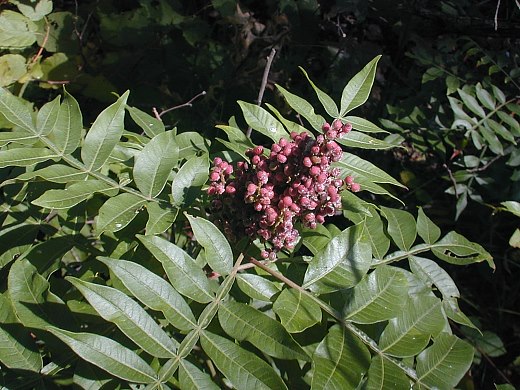
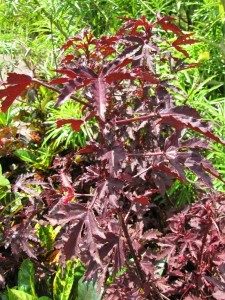
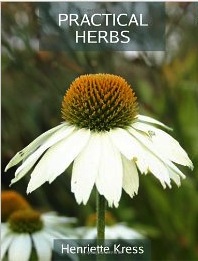
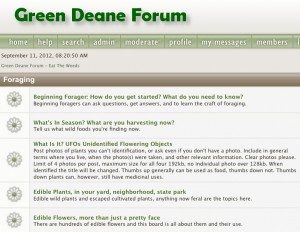
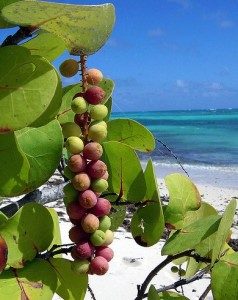

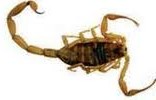

Hi Deane! I really enjoy getting your newsletter. Last weeks newsletter came as a surprise to me. You were vacationing in my neck of the woods! I am in eastern Tennessee. The hike you took to Laurel Falls…I took the same hike a few weeks earlier. I so wish I had run into you on the trail! I would have loved to meet you. All the weeds you desribed last week were very helpful for me as I have been trying to identify a few of them with no real luck. I am a recent transplant here from southern Georgia so I am still trying to figure out all the plants up here. What you posted as Japanese knotweed was very helpful as this stuff is everywhere up here. My question…does the Japanese knotweed flowers sometimes come out pinkish/reddish? Everything I can find says white/creme colored. Is there another plants that resembles the Japanese knotweed with dark pink flowers? I have seen many patches with the white flowers but also quite a few pink/reddish. Thanks so much for all the info you always share. I am anxious to EAT SOME WEEDS!
Always enjoy reading your newsletter, Deane. When I was a science teacher, I used a stereomicroscope to look at drupes of Smooth Sumac, Staghorn Sumac, Fragrant Sumac, and Winged Sumac. The only two that I observed with hairs were Fragrant Sumac and Staghorn Sumac. The hairs of Fragrant Sumac are transparent. The hairs of Staghorn Sumac are transparent and have a liquid inside, and a pinkish-red pigment. There is a seed coating on Smooth Sumac and Winged Sumac that provides the sour taste and the color when they are used to make a beverage or a lemony rub. Last year, at about this time, I picked Winged Sumac in WV that was just ripening. I rubbed a few drupes between my thumb and index finger and licked the residue. It was so incredibly acid that it burned my lips. As I picked more to take back to Iowa, the beds of my fingernails began to burn. I rinsed them off thoroughly with my water bottle. Back in Iowa, I borrowed wide-range pH paper from a science teacher to test the acidity of the drupes. To my astonishment, it revealed a pH of 1.
Now you have my curiosity up. Winged sumac are in seasons so I will go take a closer look. I grew up with staghorn sumac.
PS: I collected a sample today of winged sumac and took a look under a dissecting microscope. The little drupes indeed had hair in them.
I thoroughly enjoy Eat The Weeds. My question is, are the leaves of the surinam cherry usable for cooking or anything else? Looking forward to your reply, Thanks!
The leaves are used as a substitute for tea.
We lived in North Georgia and there was a boatload of scorpions there. We would get relief by taking a bit of tobacco, spit in it(Yes) and apply it over the sting.and bandage.It dealt with the sting and swelling quite nicely.
Concerning scorpions – I was taught by my Native American Aunt to put fresh garlic or onion on scorpion stings and spider bites. Even my friends who are violently allergic to the, I have them put on garlic or onion “as they call the ambulance”. Relief is instanious. I once opened a Garlic capsule to treat a scorpion bite on a man’s neck; success!! During one incident at work, I pulled an onion piece from left over pizza and put it on the sting. That worked also.
A friend called about 6 bites on his face he’d gotten while sleeping. When he described the bites, (they had no pain, but were ozzing like a popped pimple), I told him to go immediately to the ER & put on garlic to begin the drawing process. Mr. Stubborn put on the garlic but blew off going to the ER. Three days later, I dragged him to the ER. They were stunned he was alive. It was definately Brown Recluse Spider bites. You don’t mess around with Brown Recluse – go to the hospital IMMEDIATELY. However the Garlic had kept him alive ( 2 bites were on his jugular vein). This remedy also works with Wasps and Yellow Jackets. My landscaping friends now keep fresh garlic in the tool box.